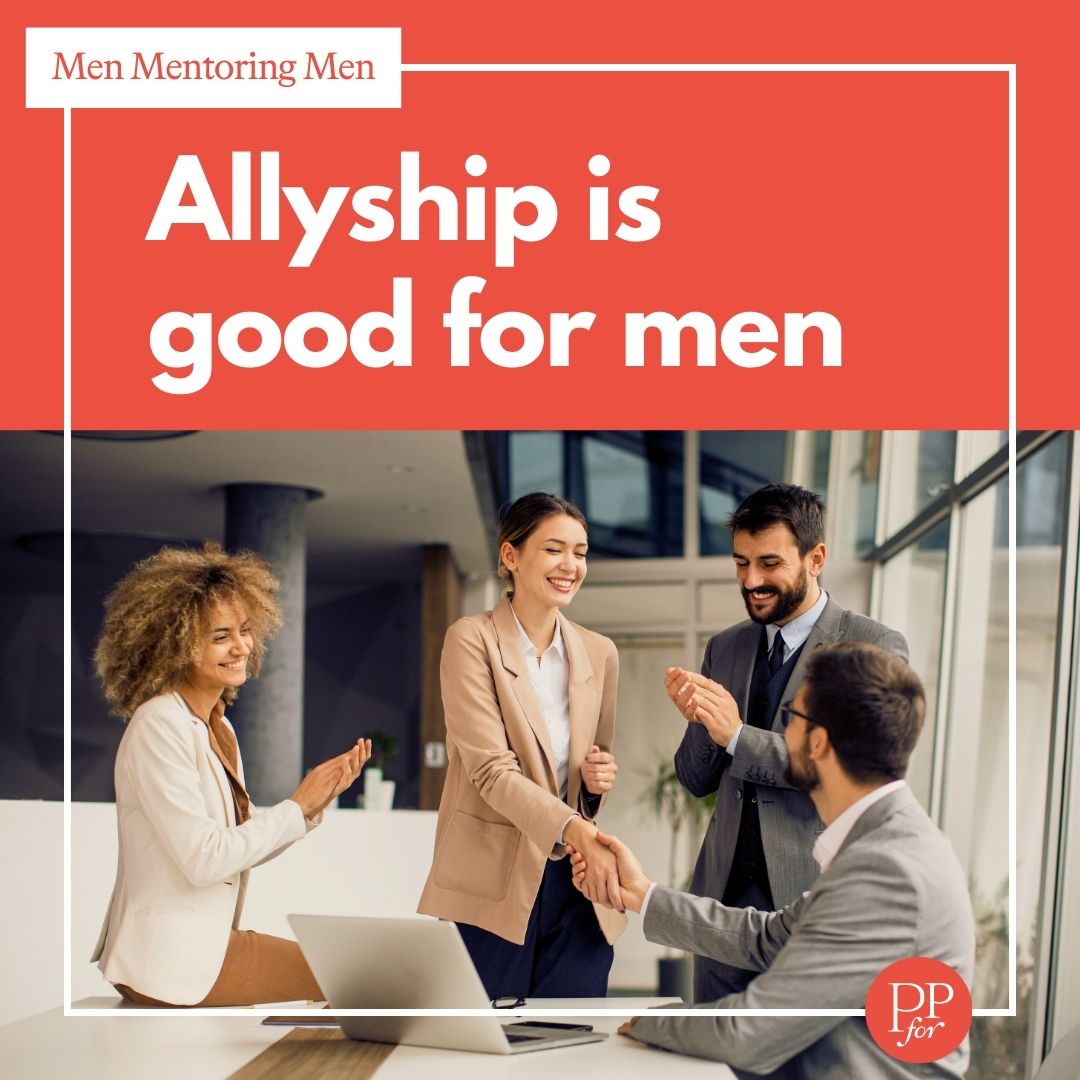When we discuss allyship at Paradigm for Parity, we often focus on how men in positions of power can support and elevate women into leadership roles. Typically, this conversation revolves around the dynamic between men and women, emphasizing the importance of intentional actions that drive meaningful progress.
One often overlooked aspect of allyship is how men engage with other men about gender parity. Can organizations foster stronger allyship by encouraging men to mentor and support one another? To explore this, we spoke with two leading psychologists specializing in masculinity and two of our trusted gender parity experts to unpack one key question: How can men help other men be better allies?
One place to start: we may not be celebrating what’s working already enough. As Reggie Miller, Chief Inclusion, Diversity, and Equity Officer at GE Vernova, points out, “We more often frame male-female professional relationships from the perspective of something going wrong. But we don’t talk enough about when it goes right.” Shifting the focus to successful examples of allyship can inspire more men to actively engage and reinforce positive behaviors in the workplace.
Despite progress in workplace equity, many men hesitate to engage in allyship because of fear, social norms, or a lack of clear models. Dr. Ronald Levant, former APA president and masculinity researcher, explains that men are socialized to avoid vulnerability and restrict emotional expression. These ingrained norms can create barriers, making it difficult for men to openly discuss topics like bias, inclusion, and gender equity with each other.
Miller suggests a powerful way to engage men in allyship is to ask: “What are you afraid of?” Many men hesitate to step into allyship due to fears of making mistakes, losing power, or damaging their reputation. This fear often leads to inaction. However, as Sandra Quince, Board Chair at Paradigm for Parity, emphasizes, “Men don’t need to change who they are—they just need to extend what they already do for each other to include others.” By shifting the focus from fear to inclusion, men can take meaningful steps toward fostering equity without feeling they have to reinvent themselves.
Mike Parent, PhD, MBA, and researcher at Hopelab, describes another barrier: “Some men operate with a zero-sum mentality—if someone else advances, they assume it comes at their expense.” This mindset discourages allyship and makes mentoring on inclusion seem like a low priority. However, the reality is that allyship isn’t a loss—it’s a gain. Supporting others strengthens teams, enhances workplace culture, and fosters better leadership, ultimately benefiting everyone.
A key theme that emerged from these conversations is that traditional masculinity norms focus too much on what men shouldn’t do—don’t be sexist, don’t exclude women, don’t let bias influence decisions. But Sandra Quince offers a more empowering perspective: “Men already have the tools to be great allies. They just need to apply them to people outside their immediate circle.” Shifting the focus from avoidance to action helps men see allyship as an extension of the leadership and support they already provide.
A future where men mentor other men in allyship will not happen without intentional effort. Visionary companies can integrate allyship into leadership training, mentorship programs, and performance evaluations, framing it as a core aspect of strong, inclusive leadership. By doing so, organizations can cultivate a workplace culture where allyship is not just encouraged but expected.
Allyship isn’t just good for the workplace—it’s good for men, too: It fosters: stronger relationships, deeper trust with colleagues, and a more engaged team. As Reggie Miller put it, “What are you afraid of?” Elevating the benefits of allyship properly showcases that it’s win-win.
Men can encourage men to practice listening without defensiveness. Mike Parent emphasized, “Allyship starts with listening to women, not just other men.” Creating space for these conversations helps build understanding and trust.
Strong male allies take action by asking a simple but powerful question: “Who’s missing from this room?” As Sandra Quince shared, recognizing who isn’t at the table—and making room for them—is one of the most effective ways men can support gender parity.
When men at the senior level openly champion allyship as a key part of their vision of leadership, other men notice. Organizations can reinforce this by recognizing and rewarding allyship just as they do innovation or collaboration, embedding it into leadership expectations.

Mike Parent suggests that one next step in evolving how men think of being men is defining a new model that highlights the joy, confidence, and self-worth that comes from allyship. If allyship continues to be framed as a duty rather than an opportunity, it will struggle to gain traction. But allyship as a form of gratifying leadership—one that rewards integrity, strength, and emotional intelligence? That’s a future where everyone wins.
Can organizations foster stronger allyship by encouraging men to mentor and support one another? To explore this, we spoke with two leading psychologists specializing in masculinity and two of our trusted gender parity experts.